Fun Eats To Try In Osaka (Beyond Okonomiyaki & Takoyaki)
With its diverse food scene, Osaka is one of the must-visit destinations in Japan for food lovers. During our 5 days in Osaka, we had a variety of different foods in different settings. Here are our favorite eats from the trip and you should definitely give them a try.
I’m sure you’ve already seen the same dishes recommended in other travel guides though we will go beyond okonomiyaki and takoyaki. We will focus on where we tried the dishes and what we liked about them.
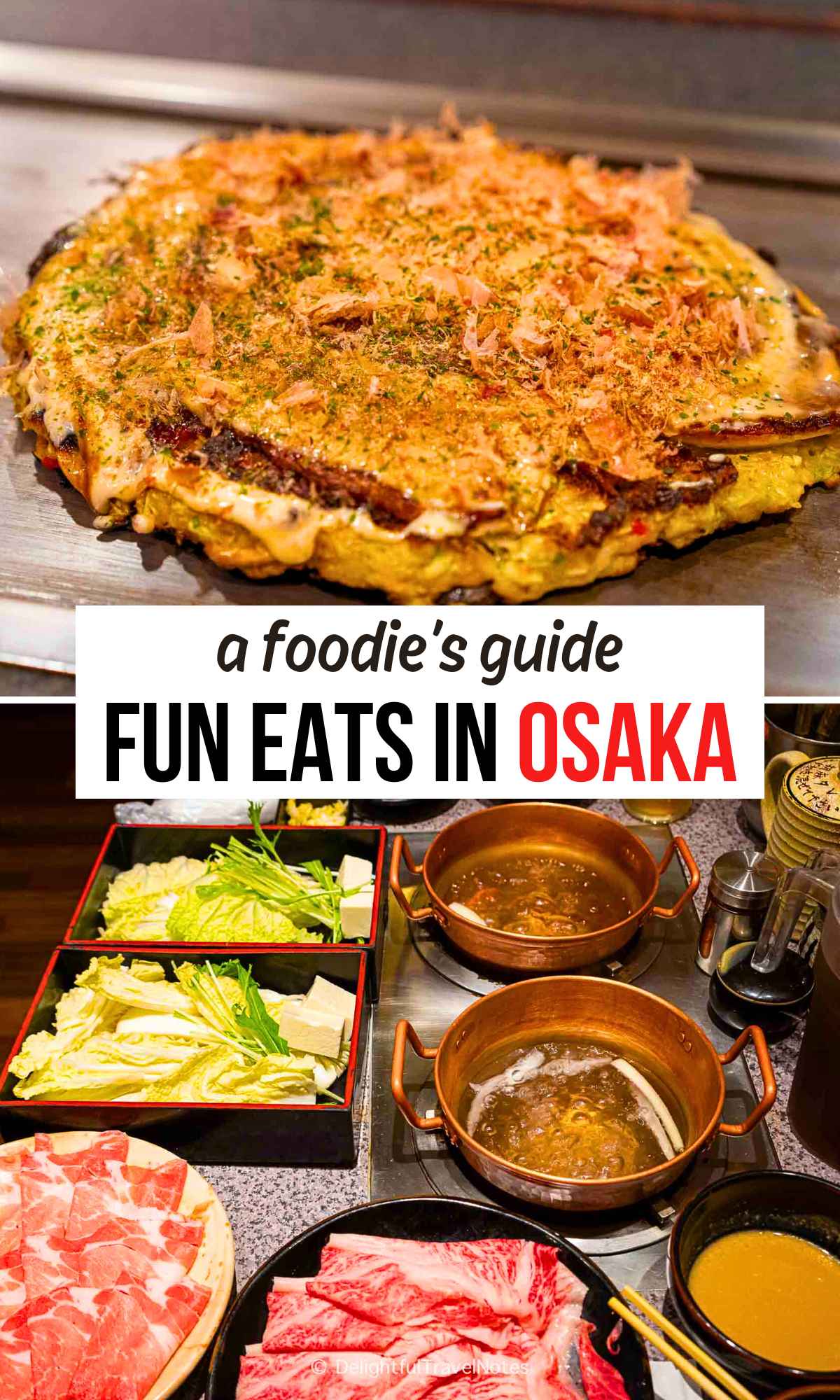
Kushikatsu (or Kushiage)
Kushikatsu is a dish consisting of skewered and deep-fried pieces of meat, seafood, and vegetables. Great choice for a fun meal with a cold beverage!

Almost any ingredient can be used for kushikatsu. They are cut into bite-sized pieces, and then breaded and fried until golden brown and crispy. The skewers are served hot with dipping sauces and raw cabbage leaves on the side.
So Shinsekai, where this dish originated, is a popular area in Osaka to try kushikatsu, but you’ll find it all over the city. Our kushikatsu dinner was at Kushiage Dan in Shinsaibashi. This is the sister restaurant of the Michelin-starred Kushikatsu Bon, and they have several locations in Osaka. We made our reservation directly on Google. Besides traditional ingredients, this upscale place also serves creative skewers or skewers featuring premium ingredients.
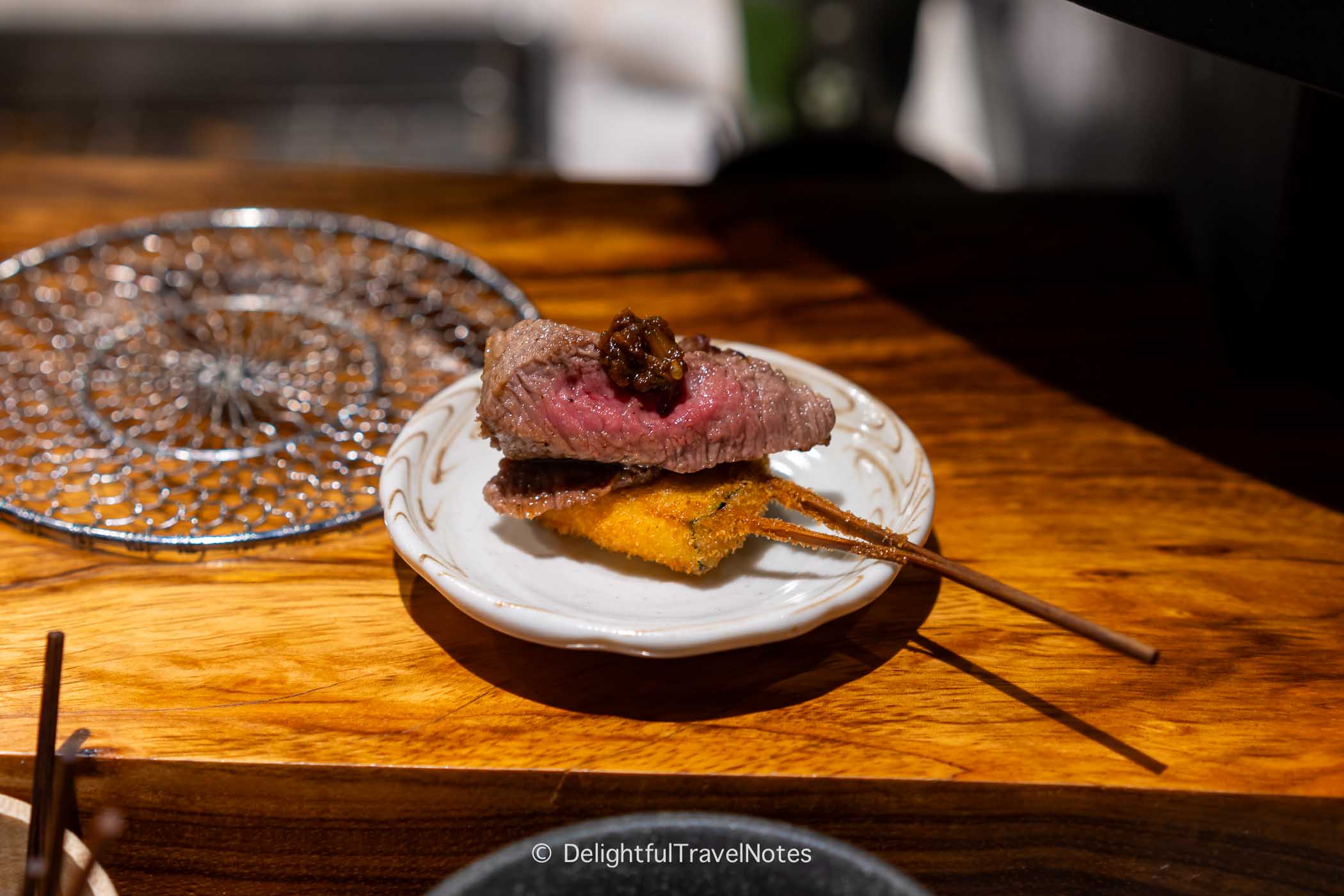
The breading was very light and quality of ingredients was good. Our premium kushiage set consisted of 15 skewers and cost almost 6,000 yen. We didn’t research carefully enough and thought it would be a la carte, but that was fine. Overall, we liked the meal, with the exception that the restaurant seemed to allow heated tobacco :(.
Okonomiyaki
Okonomiyaki, the Japanese version of savory pancakes, is very popular in Osaka. The pancakes are cooked on a teppan grill, then served hot and can be eaten directly from the grill using a small spatula – this aspect makes eating okonomiyaki fun to us. From my research, Okonomiyaki Chitose seems to be recognized as one of the best okonomiyaki places in Osaka.
We reserved our okonomiyaki dinner at Hirokazuya Higashidori (3.53 on Tabelog) near Umeda. The place is small but the atmosphere was very lively and fast-paced. All diners looked like they were having a good time enjoying the food and drinks with their companions. The staff was quite young, efficient and energetic.
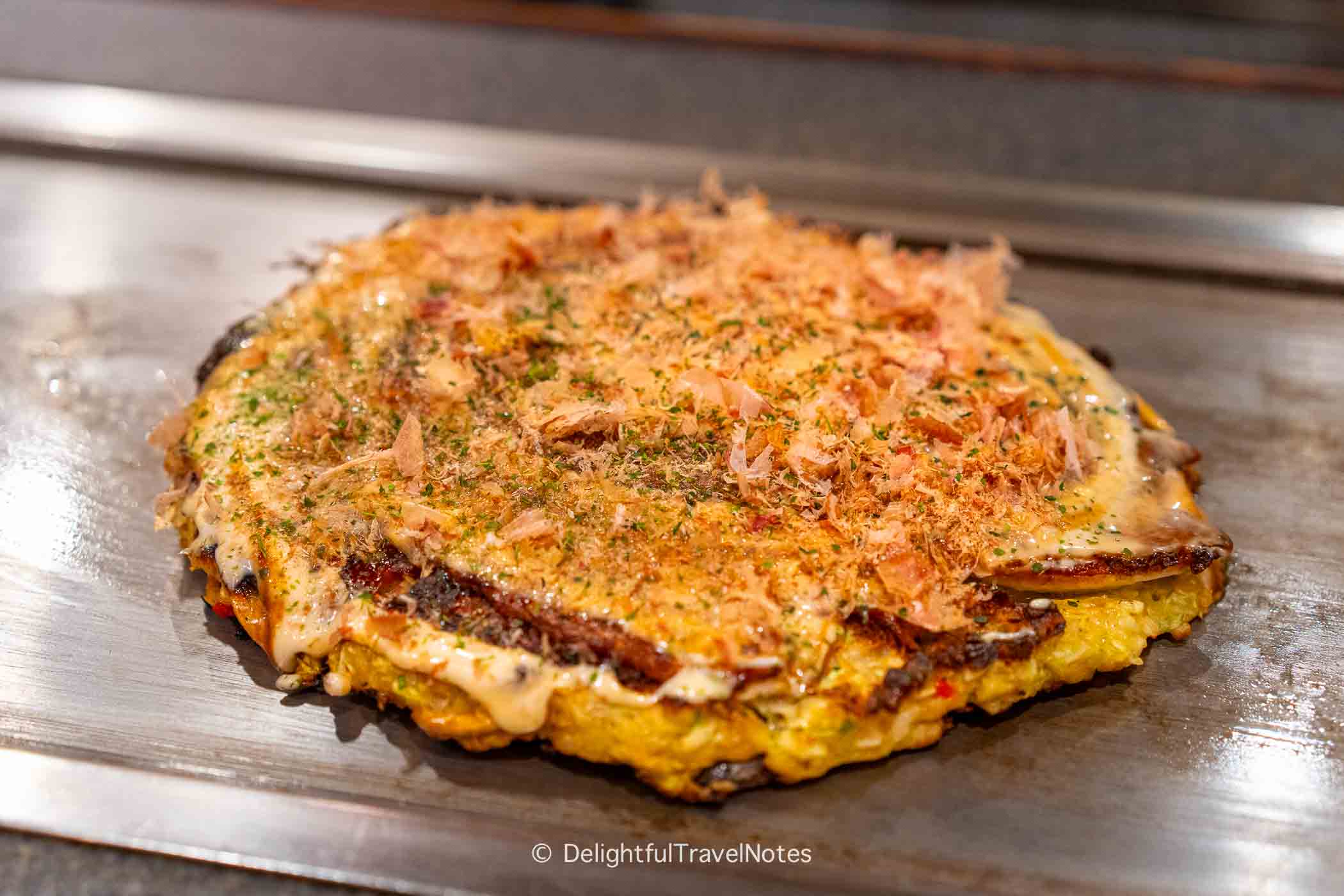
What we liked about their okonomiyaki was that it wasn’t drenched in sauce. You could select different fillings and add more proteins if you like. They also have green onion pancakes on their menu but we thought those weren’t as delicious as okonomiyaki. A lot of diners also ordered yakisoba. Overall, a fun and very cheap meal.
Takoyaki

Osaka and takoyaki (octopus balls), what else do I need to say? I just want to emphasize that Osaka takoyaki has a soft and gooey texture inside which may surprise some travelers who are used to doughy takoyaki sold outside of Japan. While the classic takoyaki filling is octopus, I also saw some other variations such as cheese.
We bought a box of classic takoyaki at Takoyaki Tanaka Namba (3.45 on Tabelog) for takeaway since we stayed at the Swissotel Nankai. I don’t know how busy it is during the day, but we walked by around 8 pm and there were just several customers so we didn’t have to wait. The batter was quite flavorful and we were glad they didn’t drench the takoyaki in heavy sauce or mayo.
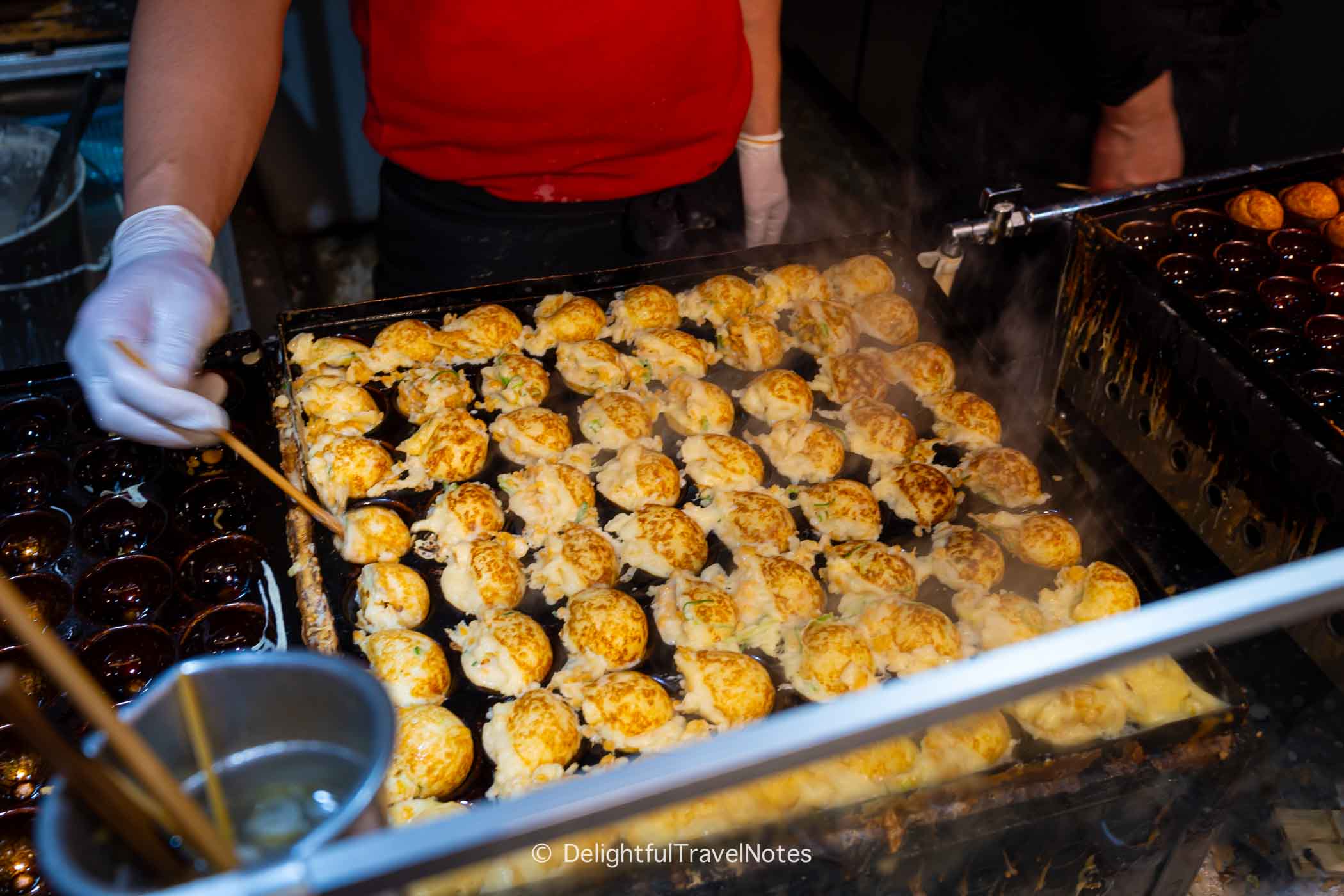
Oyster Ramen
Living in a place where there are a number of excellent ramen restaurants run by Japanese chefs, we prefer something a bit more special or different when it comes to eating ramen in Japan. This time, we tried ramen with oyster broth at Next Shikaku (3.65 on Tabelog) near Namba.
This restaurant is an upscale and modern ramen shop with stylish interior decor. The broth is rich and thick with a pronounced briny, oceanic oyster flavor. It was delicious, flavorful and not too salty. The noodles complemented the broth beautifully with a satisfying chewiness.
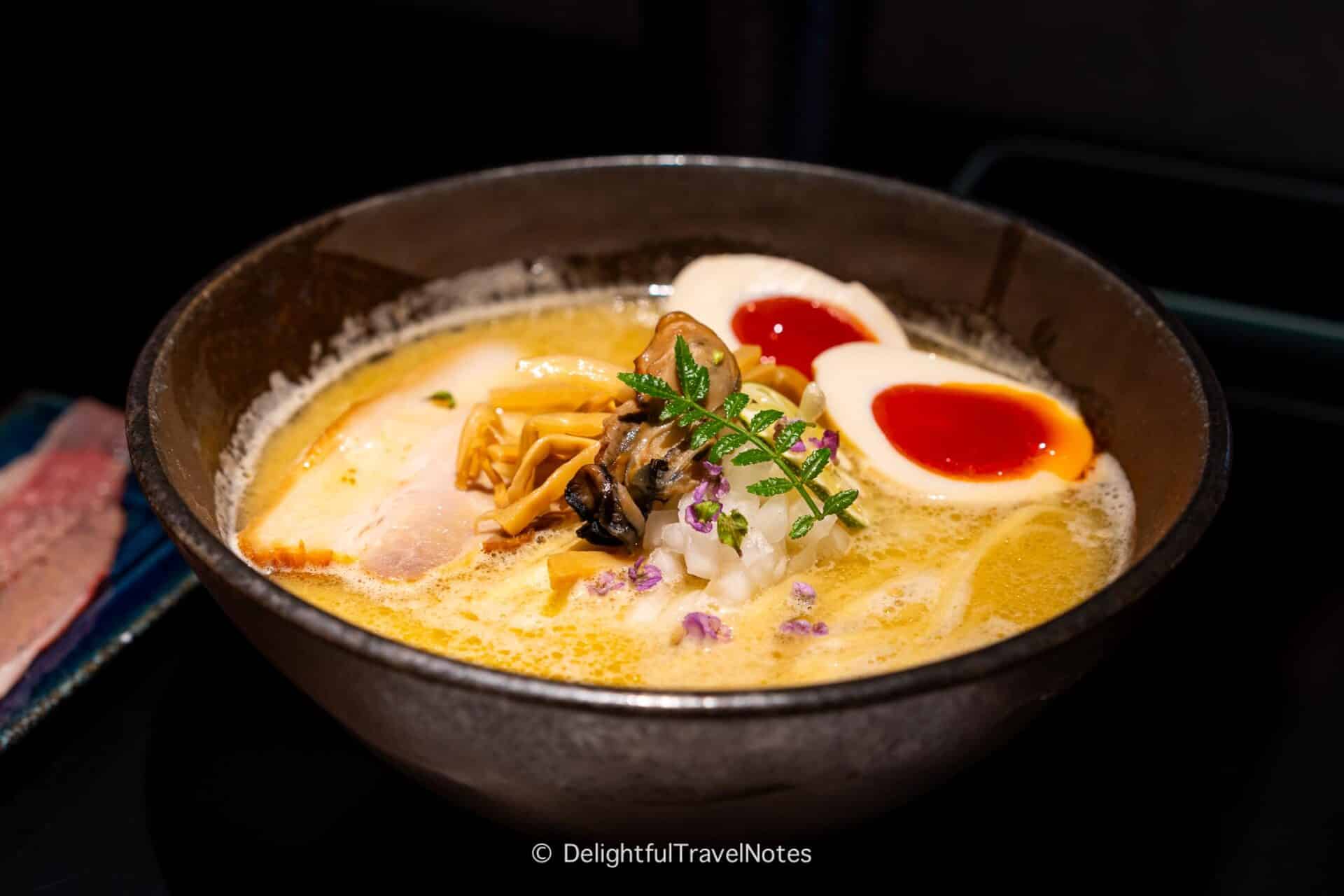
For us, it is a ramen place that’s worth trying in Osaka. The price is pretty cheap. We came at 1 pm and waited for about 20 minutes to be seated.
Zojirushi Shokudo
Shokudo (食堂) refers to casual, cafeteria-style dining establishments in Japan that serve a wide variety of affordable and hearty dishes. As a long time owner of Zojirushi rice cookers, I was interested in trying their shokudo restaurant (3.62 on Tabelog) located in SkyO building which is connected directly to our hotel.
Zojirushi Shokudo‘s menu consists of several beautifully-plated set menus. Main dish options include beef, chicken, and fish. Each course cost around 2,000 yen.
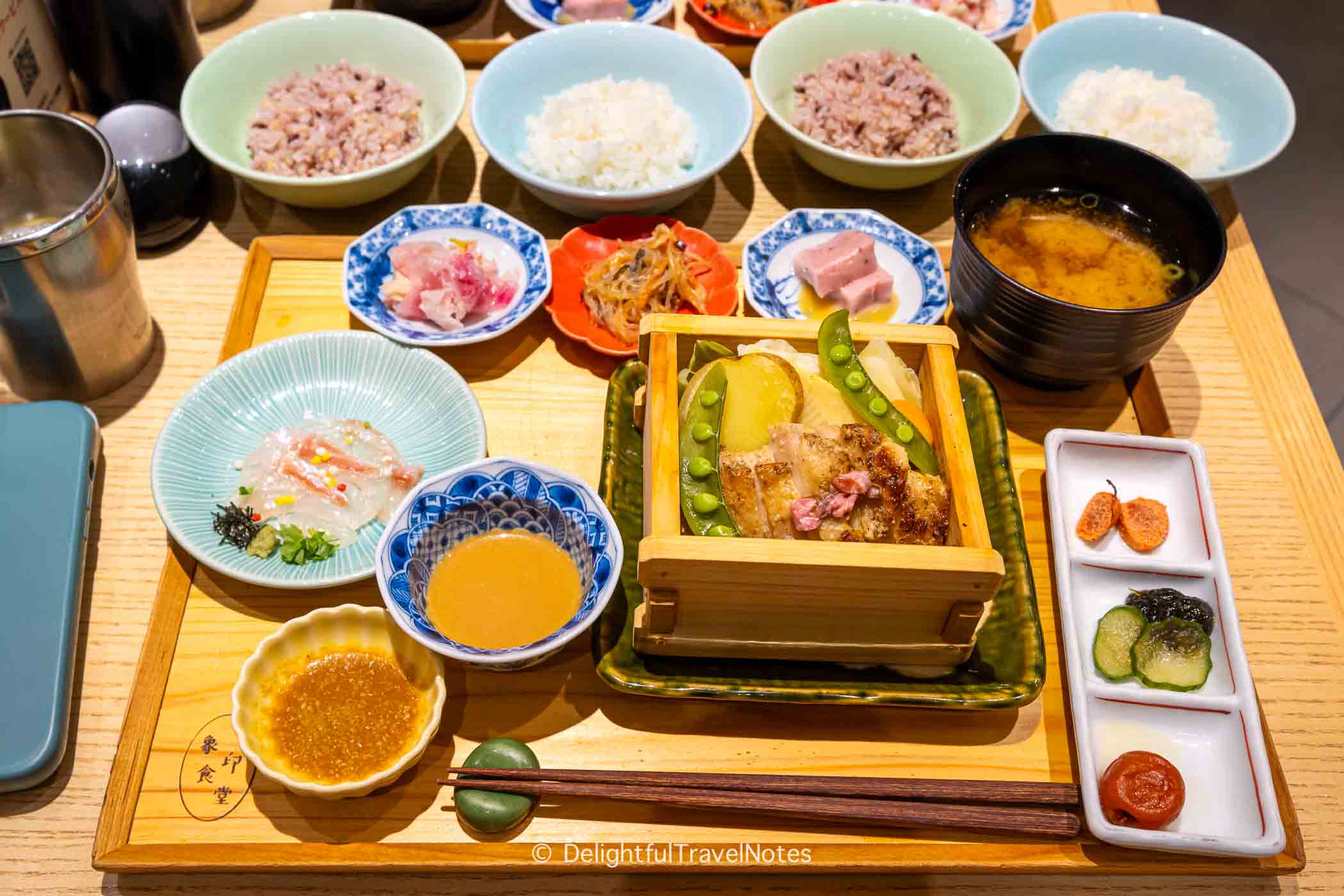
You can choose different types of their high-quality cooked rice and refill as many times as you want. I’m not sure if it’s the rice blend they use, their rinsing method, cooking techniques, or something else, but their rice is better than what we make at home with Japanese rice in our Zojirushi cooker.
Yakitori
Yakitori features skewered chicken pieces grilled over a charcoal fire. Various parts of the chicken can be used, offering different textures and flavors. During our research for restaurant reservations before the trip, we came across quite many yakitori places in Osaka. We finally chose Yakitori Taimatsu (3.67 on Tabelog), a sister restaurant of the Michelin-starred Yakitori Ichimatsu.
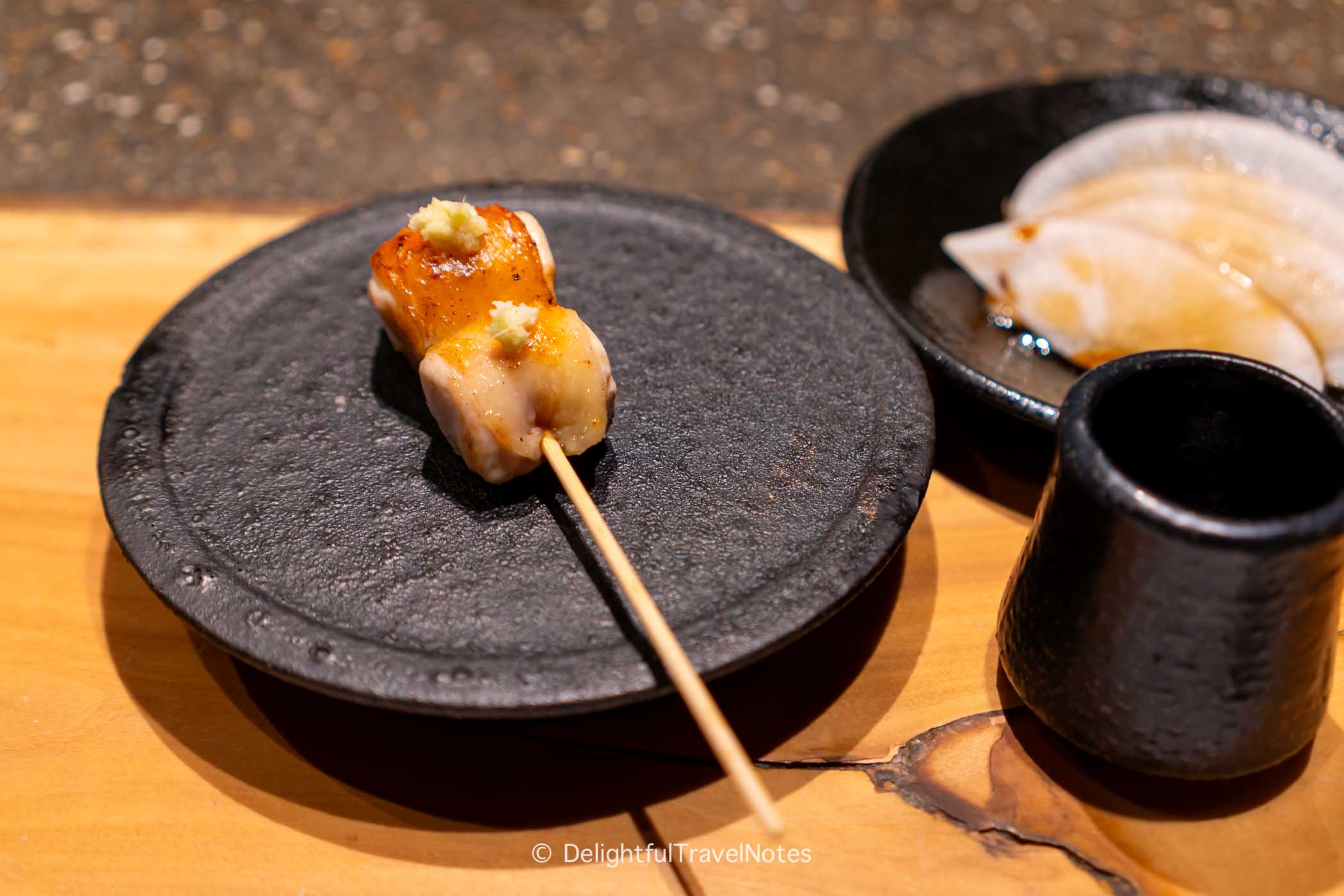
Our 12,000 yen yakitori omakase consisted of 16 dishes and we thought the price was quite reasonable for the amount and quality of food. The team was super friendly and energetic, which made our dining experience both enjoyable and engaging.
If you are an adventurous eater, we definitely recommend yakitori omakase. It is a fantastic opportunity to see how chefs skillfully handle different parts of the chicken. However, for Western diners, some parts might seem unusual or unfamiliar, such as hearts or gizzards. These parts are still appreciated in many Asian cultures, including Japanese and Vietnamese (our culture), for their unique textures and flavors. So, keep that in mind and approach the experience with an open mind.
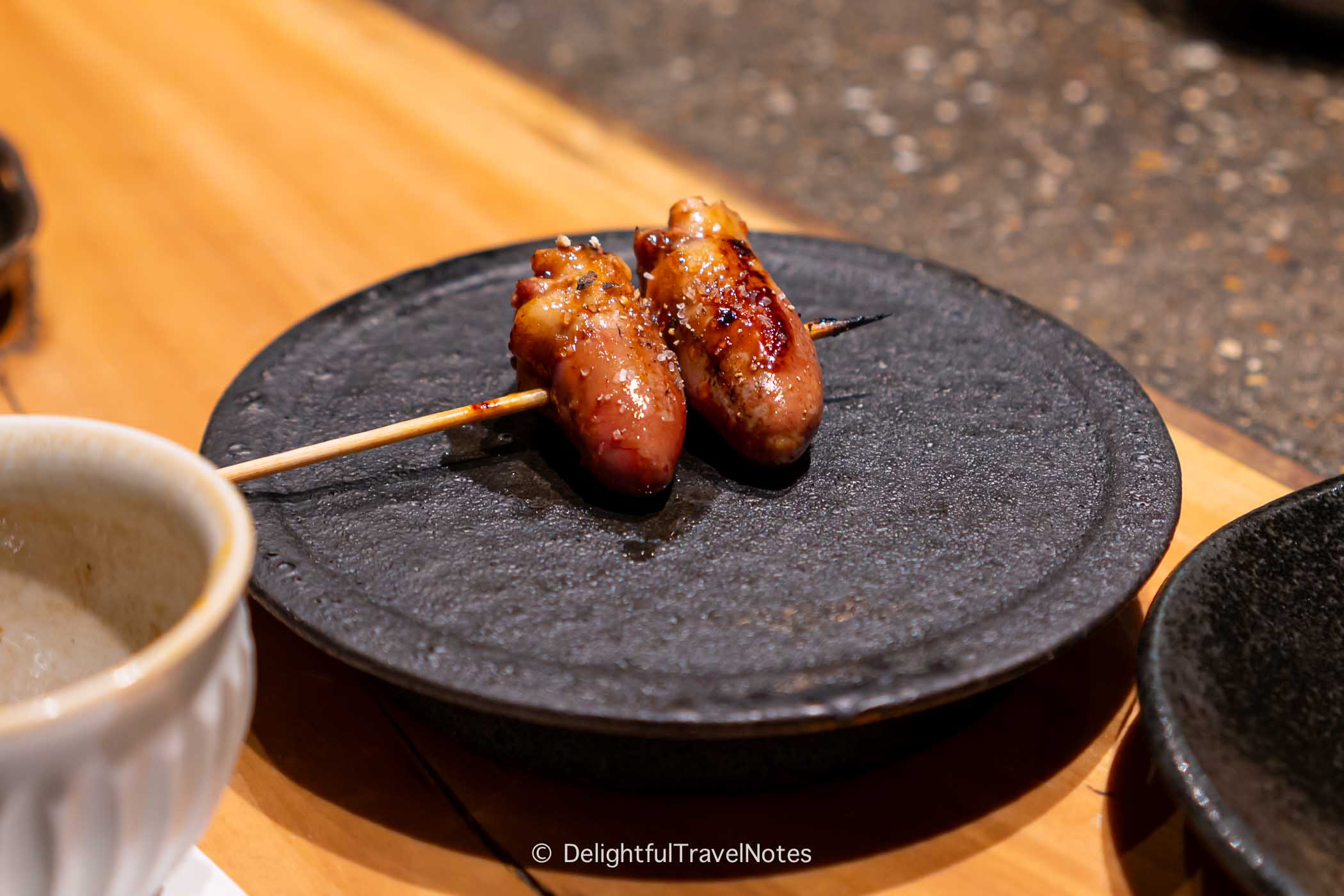
Sukiyaki and Shabu-shabu
Don’t forget to try Kansai-style sukiyaki when you’re in Osaka. I already talked about Kansai-style sukiyaki in my guide about what to eat in Kyoto. In Kansai-style, the meat is first grilled and then simmered in a sweet and savory broth. If possible, try it with high quality wagyu – it’s worth it.
Shabu-shabu is a popular Japanese hot pot that involves cooking thinly sliced meat and vegetables in a pot of boiling broth at the dining table. For this trip, we decided to try Shabutei (3.59 on Tabelog), a shabu-shabu chain, in Osaka. It’s cheap, fast, and affordable, with options for higher-grade meat as well.

Though it is a decent option, we probably still prefer one with high-quality beef such as the shabu-shabu with Hida beef we had at Madoka no Mori, an excellent ryokan in Hakone last year. For us, sukiyaki and shabu-shabu are dishes that are worth the splurge for high-end wagyu.
Kaiten Sushi
I’m not talking about just any kaiten sushi. I’m talking specifically about Kaiten Sushi Ginza Onodera. Kaiten sushi, also known as conveyor belt sushi or sushi train, is generally a fun experience, but the food quality is often not great. As a result, I wasn’t interested in trying it until I saw that Ginza Onodera, a well-known sushi restaurant group in Japan, had created a kaiten sushi brand.
We once had an omakase lunch at the Ginza Onodera location in New York in 2018 when it had 2 Michelin stars (this restaurant just closed last year though). Given our past experience, I had hoped their kaiten sushi concept would be decent, and our dinner at Kaiten Sushi Ginza Onodera in Osaka did not disappoint. The fish quality was pretty good, much better than what we had tried at regular chains such as Sushi Zanmai. Although the rice didn’t quite match the texture and skill of high-end restaurants, it was acceptable. You can find full details of my dinner at Kaiten Sushi Ginza Onodera in this post.
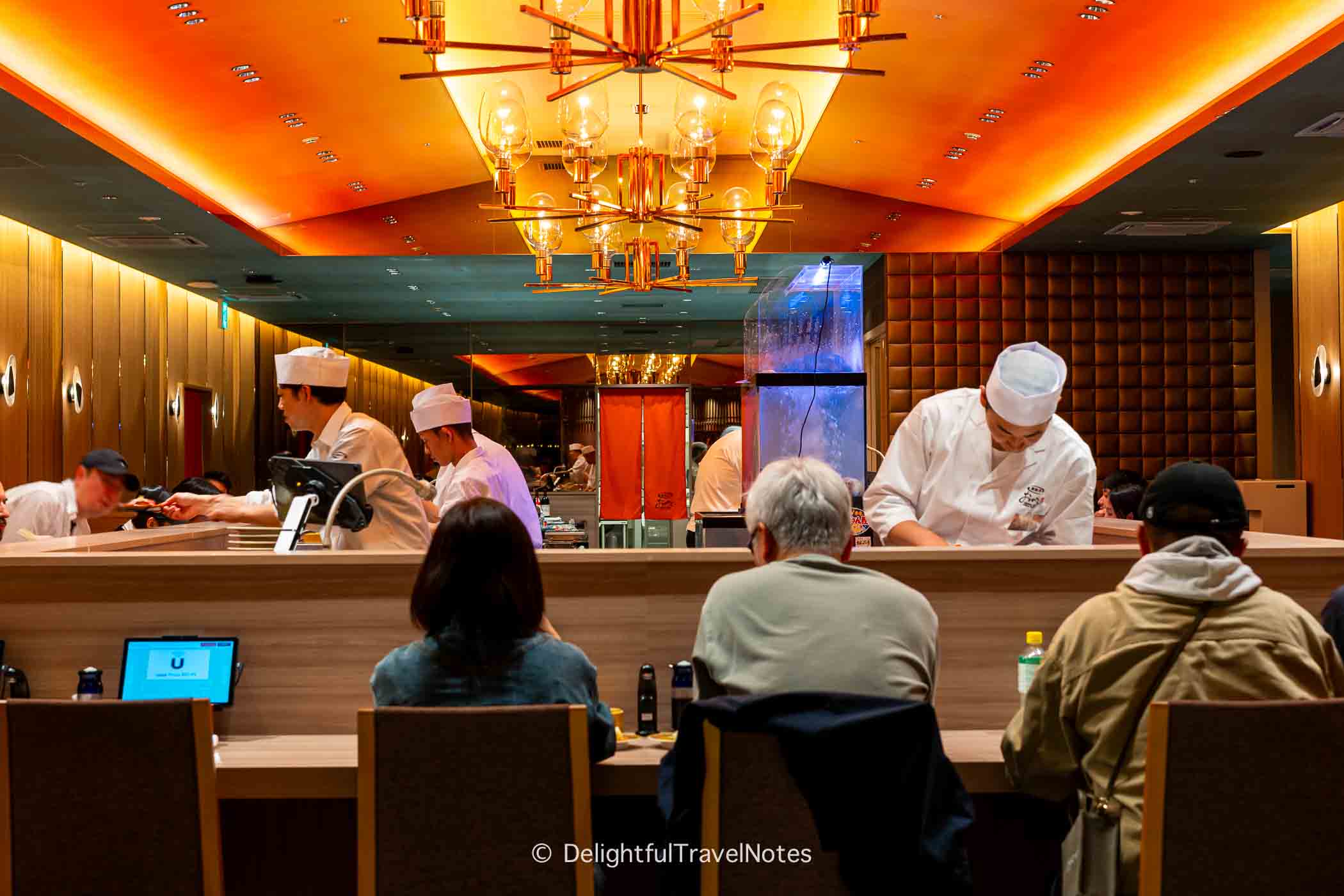
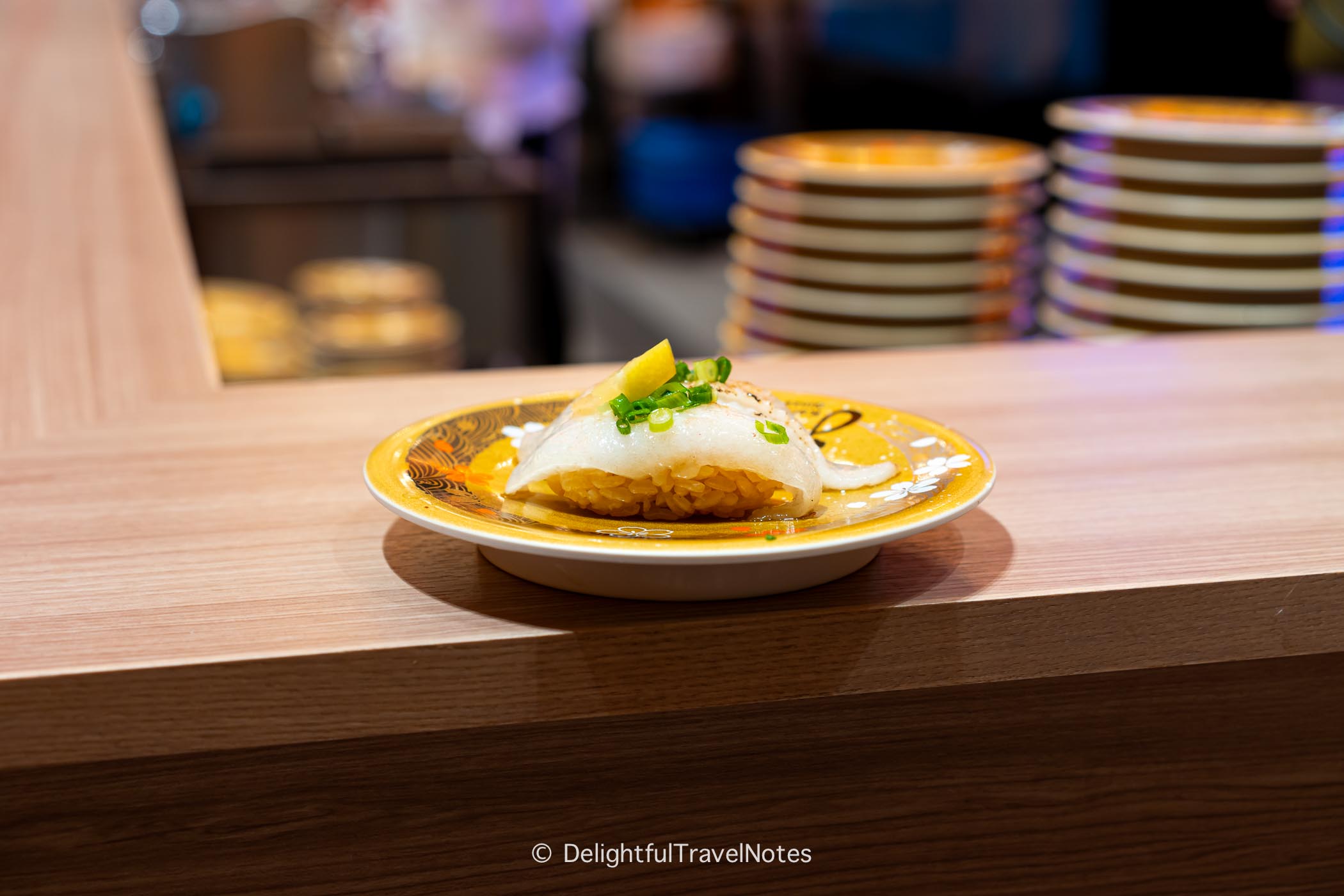
So, if you’re looking for decent quality kaiten sushi, definitely give Kaiten Sushi Ginza Onodera a try. However, the one in Osaka doesn’t have an actual conveyor belt; instead, diners order through a tablet, and the chefs prepare and place the sushi on the counter. They also have locations in Kyoto and Tokyo.
More Osaka Travel Guides
If you found this article helpful, please consider sharing it on Pinterest! Thank you so much!
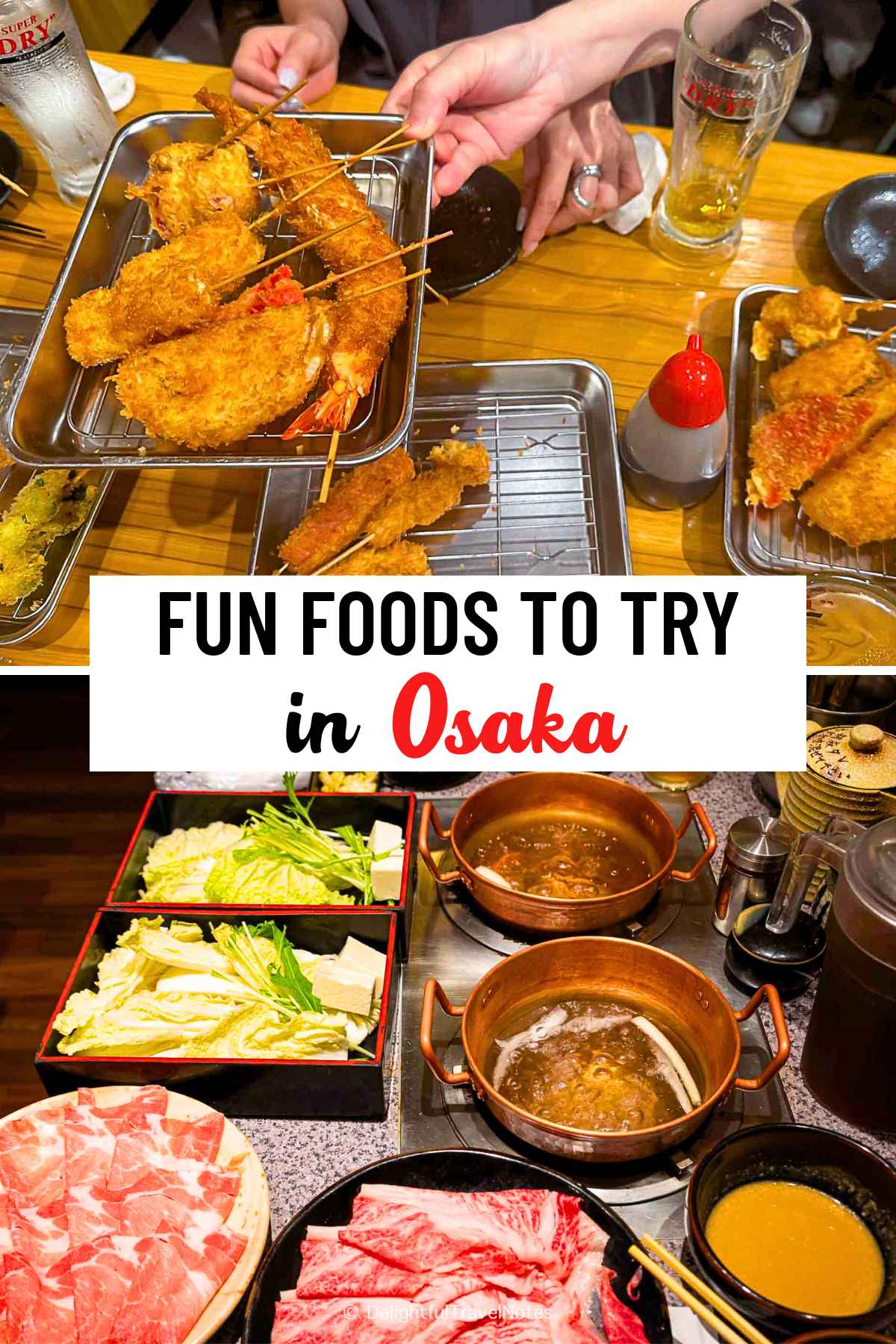
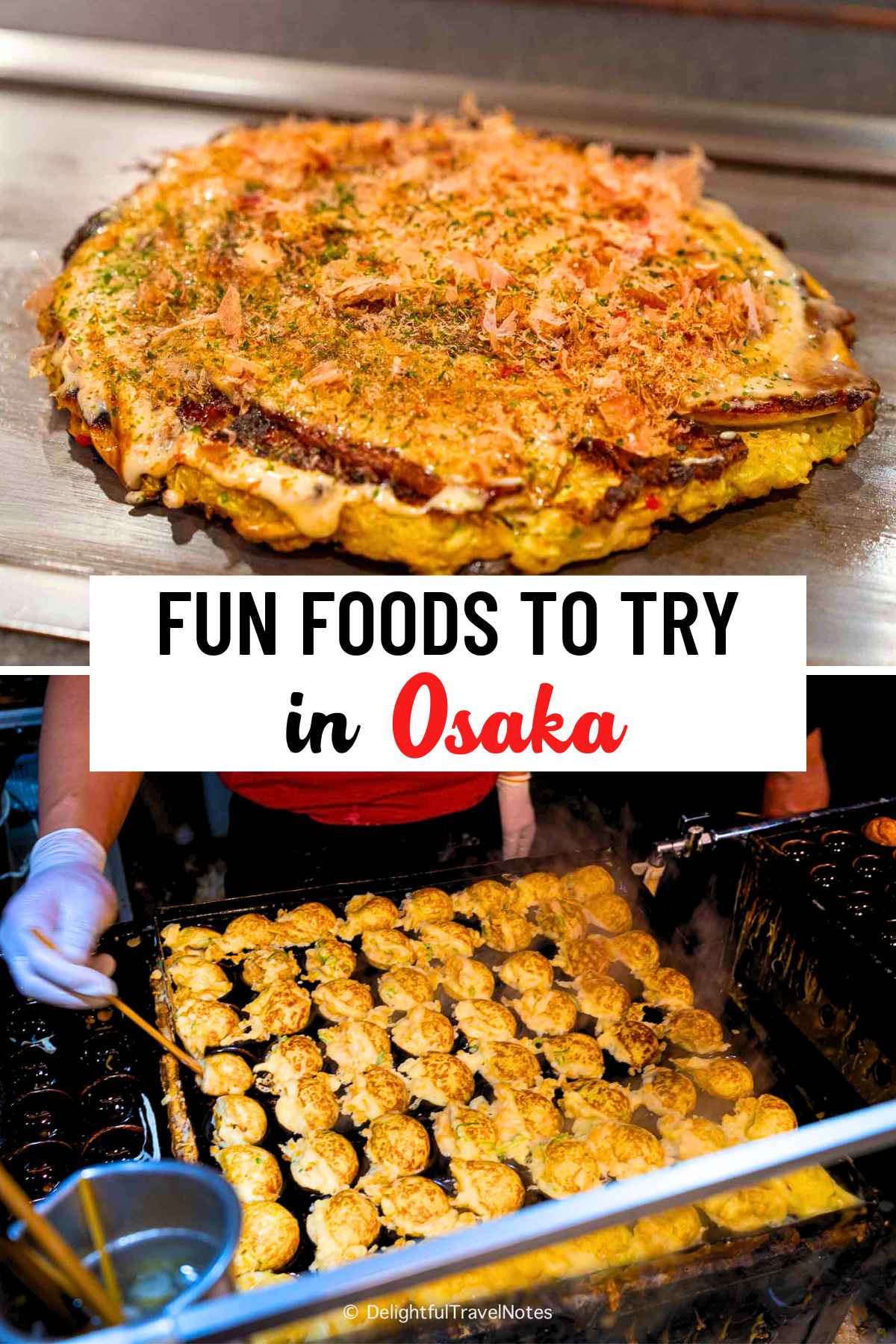

Explore More
Top 12 Best Ryokan in Hakone with Private Onsen
Bamboo Groves to Visit in Kyoto (and Alternatives to Arashiyama Bamboo Forest)
Kawaguchiko Guide: A Day Trip From Tokyo By Car